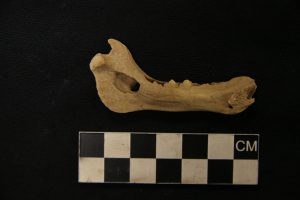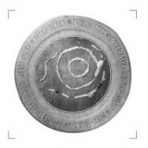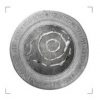
The zooarchaeological results discussed in this brief contribute refers to the animal remains found during the archaeological excavation at the site of Vetricella. In total, 1,200 bones and teeth have been identified at anatomical and taxonomic levels. These latter remains were found in the archeological contexts, here listed: US 112, 118, 181 and US 459.
The preliminary zooarchaeological analyses show that pork (Sus sp.) was by far the most popular meat consumed by the community living at Vetricella; most of the animals were culled at a very young age-stage, suggesting the consumption of suckling piglets. The presence of perinatal individuals is also attested. This evidence is particularly important, since it suggests that breeding occurred on site ( Fig.1).
Among the domestic animals, domestic fowl (Gallus gallus domesticus) represented an important source of food. All the individuals were adult and some butchery marks were also observed on some post-cranial elements. Domestic fowl was raised for its meat as well as for eggs. Cattle are barely present at the site and mainly refer to adult individuals.
The near-absence of caprines (sheep, Ovis aries and goat, Capra hircus) provide additional important information on animal husbandry at Vetricella. The absence of sheep may be emblematic of the very specific function of the site during this period; pork and, to a lesser extent, domestic fowl and wild game, represented the only source of food of a site which was apparently not devoted to the production of a surplus.
Future zooarcheological analyses will needed in order to confirm or deny such preliminary hypotheses.


